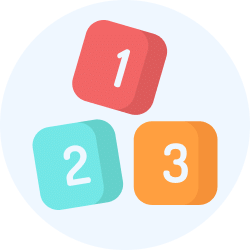Class 1 Exam > Class 1 Notes > English for Class 1 (Mridang) > Chapter Notes: The Food we Eat
The Food we Eat Chapter Notes | English for Class 1 (Mridang) PDF Download
| Table of contents |

|
| Introduction |

|
| Types of Food Mentioned |

|
| Key Concepts |

|
| New Words and Sight Words |

|
| Conclusion |

|
Introduction
This chapter is all about the different kinds of food we eat every day. It talks about how we can share our food with our friends and family and why sharing is important.
 The food we eat
The food we eat
Types of Food Mentioned
Fruits:
Fruits are delicious and healthy snacks. They come in many shapes, sizes, and colors. Some examples of fruits are apples, bananas, and oranges.
Indian Dishes:
In this chapter, we learn about some tasty Indian dishes:
 Some Indian Dishes
Some Indian Dishes
Poori with Aloo Sabzi:
- Poori is a round, deep-fried bread that is soft and fluffy.
- Aloo Sabzi is a yummy potato curry that goes well with poori.
Roti with Sabzi:
- Roti is another type of Indian bread that is flat and made from wheat flour.
- Sabzi means vegetables. We can have roti with many different vegetable dishes.
Idli with Chutney:
- Idli is a soft, white cake made from rice and lentils.
- It is usually served with chutney, a spicy sauce that adds flavor.
Gobhi Paratha:
- Gobhi Paratha is a tasty flatbread stuffed with spiced cauliflower.
- It is often served with yogurt.
Chilla:
- Chilla is a savory pancake made from gram flour.
- It can be filled with vegetables and is delicious!
Key Concepts
Sharing:- Sharing food is a wonderful way to show kindness to our friends.
- When we share our food, everyone can enjoy different flavors together.
- You can share your lunch with your classmates, which makes lunchtime more fun!
 Concept of Sharing
Concept of Sharing
Gratitude:
- It is important to say "thank you" for the food we eat.
- We should also thank the people who grow and prepare our food, like farmers and cooks.
Cultural Diversity:

- India is a big country with many different cultures.
- This means we have many types of food from different places.
- We can learn about the special dishes that families make in different regions of India
 |
Download the notes
Chapter Notes: The Food we Eat
|
Download as PDF |
Download as PDF
New Words and Sight Words
New Words:
- Share: To give some of what you have to others.
- Thank You: A polite way to show appreciation.

- Lunch: The meal we eat in the middle of the day.
- Sick: When you do not feel well.
- Fruits: Natural foods that grow on trees or plants and are sweet to eat.
Sight Words:

- From: Coming out of a place.
- For: To give something to someone.
- Them: A word we use to talk about other people.
- Their: Something that belongs to them.
- They: A word we use to talk about a group of people.
- Has: Means something belongs to someone.
- She: Refers to a girl or woman.
- Have: Means to possess something.
Conclusion
This chapter teaches us about the wonderful world of food, the importance of sharing, and appreciating the farmers who work hard to provide us with our meals. Let’s remember to enjoy our food, share with our friends, and always say “thank you”!
The document The Food we Eat Chapter Notes | English for Class 1 (Mridang) is a part of the Class 1 Course English for Class 1 (Mridang).
All you need of Class 1 at this link: Class 1
|
16 videos|76 docs|10 tests
|
FAQs on The Food we Eat Chapter Notes - English for Class 1 (Mridang)
| 1. What are the different types of food mentioned in the article? |  |
| 2. Why is it important to have a balanced diet? |  |
Ans. A balanced diet is crucial because it provides the body with essential nutrients, including vitamins, minerals, and energy. It helps maintain overall health, supports immune function, and reduces the risk of chronic diseases.
| 3. What key concepts are highlighted in relation to food and nutrition? |  |
Ans. The key concepts highlighted include the importance of food groups, the role of portion sizes, and the benefits of whole foods versus processed foods. The article emphasizes how understanding these concepts can lead to healthier eating habits.
| 4. Are there any new words or sight words introduced in the article? |  |
Ans. Yes, the article introduces new words such as "nutrients," "sustainability," and "processed." These terms are explained in context to help readers understand their significance in discussing food and nutrition.
| 5. How does the article conclude about the food we eat? |  |
Ans. The article concludes by emphasizing the importance of making informed food choices and understanding the impact of our diet on health and well-being. It encourages readers to explore different food options and to prioritize nutritional value in their meals.
Related Searches






















